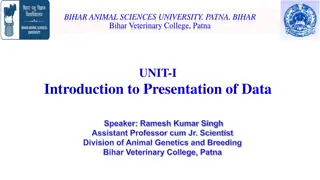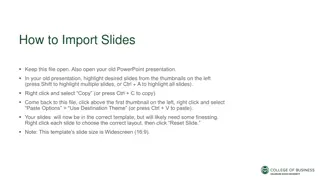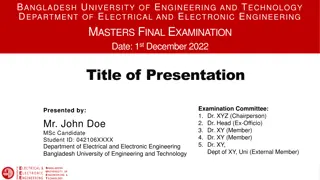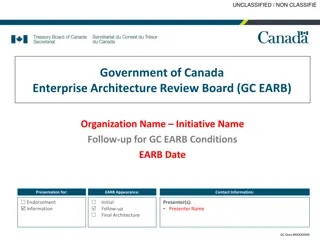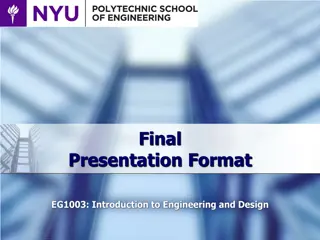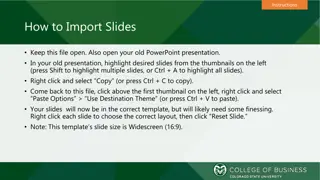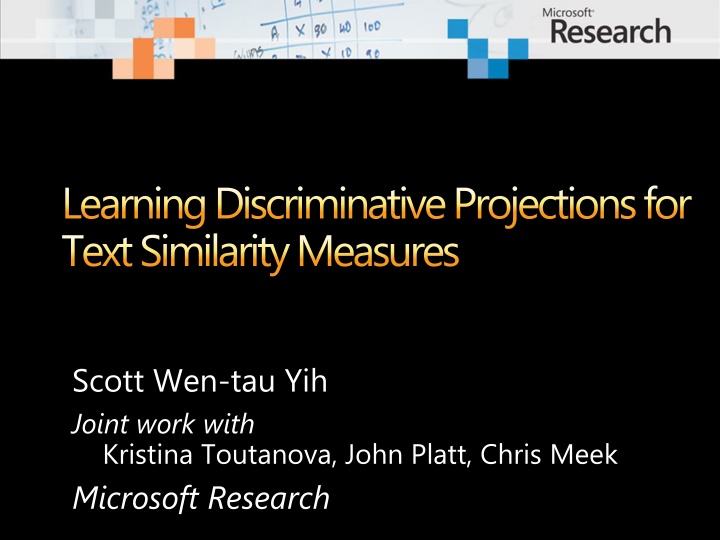
Learning Concepts for Text Similarity Projections
Explore discriminative projections for text similarity measures, cross-language document retrieval, and web search advertising. Discover the vector space model, ideal mapping, and various dimensionality reduction methods like S2Net and PCA.
Download Presentation

Please find below an Image/Link to download the presentation.
The content on the website is provided AS IS for your information and personal use only. It may not be sold, licensed, or shared on other websites without obtaining consent from the author. If you encounter any issues during the download, it is possible that the publisher has removed the file from their server.
You are allowed to download the files provided on this website for personal or commercial use, subject to the condition that they are used lawfully. All files are the property of their respective owners.
The content on the website is provided AS IS for your information and personal use only. It may not be sold, licensed, or shared on other websites without obtaining consent from the author.
E N D
Presentation Transcript
Learning Discriminative Projections for Text Similarity Measures Scott Wen-tau Yih Joint work with Kristina Toutanova, John Platt, Chris Meek Microsoft Research
Cross-language Document Retrieval Spanish Document Set English Query Doc
Web Search & Advertising Query: ACL in Portland ACL Construction LLC (Portland) ACL Construction LLC in Portland, OR -- Map, Phone Number, Reviews, www.superpages.com ACL HLT 2011 The 49th Annual Meeting of the Association for Computational Linguistics acl2011.org
Web Search & Advertising Query: ACL in Portland Don't Have ACL Surgery Used By Top Athletes Worldwide Don't Let Them Cut You See Us First www.arpwaveclinic.com Expert Knee Surgeons Get the best knee doctor for your torn ACL surgery. EverettBoneAndJoint.com/Knee ACL: Anterior Cruciate Ligament injuries
Vector Space Model vq cos( ) vd v Represent text objects as vectors Word/Phrase: term co-occurrences Document: term vectors with TFIDF/BM25 weighting Similarity is determined using functions like cosine of the corresponding vectors q Weaknesses Different but related terms cannot be matched e.g., (buy, used, car) vs. (purchase, pre-owned, vehicle) Not suitable for cross-lingual settings
Learning ConceptVector Representation Are ?? and ?? relevant or semantically similar? ???(??,??) ?? ?? Input: high-dimensional, sparse term vectors Output: low-dimensional, dense concept vectors Model requirements Transformation is easy to compute Provide good similarity measures
Ideal Mapping High-dimensional space Low-dimensional space
Dimensionality Reduction Methods S2Net CPLSA OPCA HDLR PLTM CCA JPLSA CL-LSI PLSA PCA LDA LSA Projection Probabilistic
Outline Introduction Problem & Approach Experiments Cross-language document retrieval Ad relevance measures Web search ranking Discussion & Conclusions
Goal Learn Vector Representation Approach: Siamese neural network architecture Train the model using labeled (query, doc) Optimize for pre-selected similarity function (cosine) ?sim ????,???? ? vqry vdoc Query Doc
Goal Learn Vector Representation Approach: Siamese neural network architecture Train the model using labeled (query, doc) Optimize for pre-selected similarity function (cosine) ?sim ????,???? ? vqry vdoc Model Query Doc
S2Net Similarity via Siamese NN Model form is the same as LSA/PCA Learning the projection matrix discriminatively ?sim ????,???? vqry vdoc ?1 ?? ????= ?????? ?? ? ?1 ??
Pairwise Loss Motivation In principle, we can use a simple loss function like mean-squared error: 1 2? ????vqry,vdoc 2. But ???1 0.95 ???2 + 0.89 ????? ???3 0.54 ???4 + 0.43 ???5 0.21
Pairwise Loss Consider a query ? and two documents ?1 and ?2 Assume ?1is more related to ?, compared to ?2 ??,??1,??2: original term vectors of ?,?1and ?2 = ????????,????1 ????????,????2 20 ???? ;? = log(1 + exp ? ) ?: scaling factor, as 2,2 ? = 10 in the experiments 15 10 5 0 -2 -1 0 1 2
Model Training Minimizing the loss function can be done using standard gradient-based methods Derive batch gradient and apply L-BFGS Non-convex loss Starting from a good initial matrix helps reduce training time and converge to a better local minimum Regularization Model parameters can be regularized by adding a smoothing term ? 2? ?0 Early stopping can be effective in practice 2 in the loss function
Outline Introduction Problem & Approach Experiments Cross-language document retrieval Ad relevance measures Web search ranking Discussion & Conclusions
Cross-language Document Retrieval Dataset: pairs of Wiki documents in EN and ES Same setting as in [Platt et al. EMNLP-10] #document in each language Training: 43,380, Validation: 8,675, Test: 8,675 Effectively, 433802= 1.88 billion training examples Positive: EN-ES documents in the same pair Negative: All other pairs Evaluation: find the comparable document in the different language for each query document
Results on Wikipedia Documents 0.8 Mean Reciprocal Rank (MRR) 0.6 0.4 S2Net OPCA CPLSA JPLSA CLLSI 0.2 0 32 64 128 256 Dimension 512 1024 2048 4096
Ad Relevance Measures Task: Decide whether a paid-search ad is relevant to the query Filter irrelevant ads to ensure positive search experience ????: pseudo-document from Web relevance feedback ????: ad landing page Data: query-ad human relevance judgment Training: 226k pairs Validation: 169k pairs Testing: 169k pairs
The ROC Curves of the Ad Filters 0.9 Better True-Positive Rate 0.8 (Caught bad ads) 0.7 0.6 S2Net (k=1000) 14.2% increase! 0.5 TFIDF HDLR (k=1000) 0.4 CPLSA (k=1000) 0.3 0.05 0.1 0.15 0.2 0.25 False-Positive Rate (Mistakenly filtered good ads)
Web Search Ranking [Gao et al., SIGIR-11] Evaluate using labeled data Train latent semantic models Parallel corpus from clicks 82,834,648 query-doc pairs Humanrelevance judgment 16,510 queries 15 doc per query in average query 1 query 2 query 3 doc 1 doc 2 doc 3 query doc 1 Good doc 2 doc 3 Fair Bad
Results on Web Search Ranking 0.479 0.5 0.460 0.45 0.4 NDCG@1 NDCG@3 NDCG@10 0.35 0.3 0.25 0.2 VSM LSA CL-LSA OPCA S2Net Only S2Net outperforms VSM compared to other projection models
Results on Web Search Ranking 0.479 0.5 0.460 0.45 0.4 NDCG@1 NDCG@3 NDCG@10 0.35 0.3 0.25 0.2 VSM LSA +VSM CL-LSA +VSM OPCA +VSM S2Net +VSM After combined with VSM, results are all improved More details and interesting results of generative topic models can be found in [SIGIR-11]
Outline Introduction Problem & Approach Experiments Cross-language document retrieval Ad relevance measures Web search ranking Discussion & Conclusions
Model Comparisons S2Net vs. generative topic models Can handle explicit negative examples No special constraints on input vectors S2Net vs. linear projection methods Loss function designed to closely match the true objective Computationally more expensive S2Net vs. metric learning Target high-dimensional input space Scale well as the number of examples increases
Why Does S2Net Outperform Other Methods? Loss function Closer to the true evaluation objective Slight nonlinearity Cosine instead of inner-product Leverage a large amount of training data Easily parallelizable: distributed gradient computation
Conclusions S2Net: Discriminative learning framework for dimensionality reduction Learns a good projection matrix that leads to robust text similarity measures Strong empirical results on different tasks Future work Model improvement Handle Web-scale parallel corpus more efficiently Convex loss function Explore more applications e.g., word/phrase similarity




